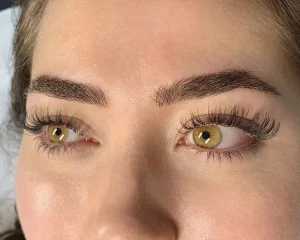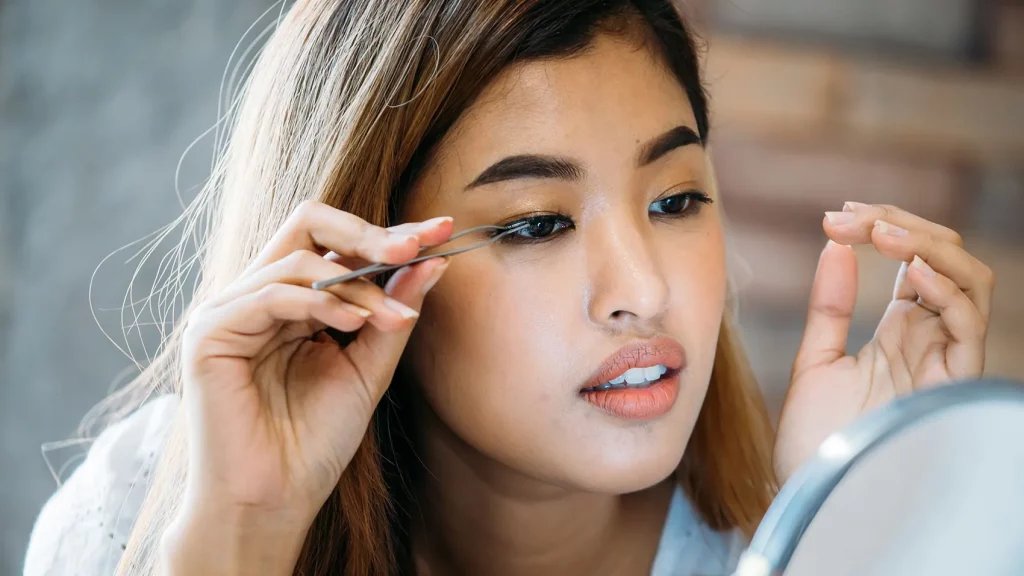In the quest for lush, full lashes, many turn to lash enhancement treatments, but safety and precision concerns have lingered in the industry. As the demand for top-notch lash treatments rises, understanding the science of lash enhancements highlights the role of technology in mitigating risks. Innovations like digital lash mapping and nanotechnology are reshaping the landscape, enabling technicians to achieve unmatched accuracy and customization. What do these advancements involve, and how do they elevate the safety and effectiveness of lash treatments?
Key Takeaways
- Advanced technologies like nanotechnology and 3D printing enable the creation of bespoke lash products with unparalleled customization and precision.
- Innovations in material development and application techniques reduce the risk of allergic reactions and irritation, ensuring a safer lash treatment experience.
- Precise lash mapping and technician accuracy are crucial in preventing infections and ensuring safe and efficient applications.
- Sanitation and cleanliness protocols are enhanced through technological advancements, minimizing the risk of infection and promoting a safe treatment environment.
- Ongoing evolution in understanding lash enhancements and technological advancements promise unprecedented safety levels in lash treatments, minimizing risks and maximizing results.
Lash Treatment Risks and Concerns
Numerous individuals seeking to enhance their lash lines often overlook the potential risks and concerns associated with lash treatments, which can lead to a range of undesirable consequences, from minor irritations to severe eye damage. Common concerns include allergic reactions, infection, and vision impairment. It is crucial to be aware of these risks to guarantee a safe and successful lash treatment experience.
Understanding the Science of Lash Enhancements
Several factors come together to determine the success of lash enhancements, including the anatomy of the lash line, the properties of the materials used, and the techniques employed by the practitioner, all of which are grounded in the underlying science of lash biology.
Understanding the science of lash enhancements involves:
- Lash growth cycles: knowing when to apply treatments for best results.
- Hair follicle structure: understanding the root of the lash to ensure secure application.
- Material compatibility: selecting materials that work in harmony with the lash and surrounding tissue.
- Physiological considerations: accounting for individual factors, such as eye shape and sensitivity.
Advancements in Lash Technology
As the understanding of lash biology and its underlying principles has evolved, so too have the technologies used to enhance and augment lashes, with innovations in material development, application techniques, and precision tools revolutionizing the industry. Advances in nanotechnology, 3D printing, and micro-robotics have enabled the creation of bespoke lash products, offering unparalleled customization and precision.
Precision and Safety in Lash Applications
A lash technician’s accuracy and command are vital factors in guaranteeing the safe and efficient application of lash treatments, where even the slightest misjudgment can lead to adverse reactions or compromised results. Understanding the science of lash enhancements is essential to achieving the best possible outcomes. Key considerations include:
- Appropriate sanitation and cleanliness to prevent infection and contamination.
- Precise lash mapping to guarantee customized treatment plans.
- Thoughtful product selection to reduce allergic reactions and irritation.
- Live monitoring to adjust treatment as necessary.
The Future of Lash Enhancement Safety
Advancements in technology are poised to revolutionize the lash enhancement industry, promising unprecedented levels of safety and precision in the application of lash treatments. As Understanding the science of lash enhancements continues to evolve, we can expect even more innovative solutions to emerge, further minimizing risks and maximizing results for lash technicians and clients alike.

Frequently Asked Questions
Can Lash Treatments Cause Eye Infections or Vision Problems?
Yes, lash treatments can potentially cause eye infections or vision problems if proper sanitation and hygiene protocols are not followed, and if the treatment is not performed by a qualified and experienced technician.
Are There Any Allergic Reactions to Lash Glue or Adhesives?
Yes, allergic reactions to lash glue or adhesives can occur, manifesting as eye irritation, redness, or swelling. It is essential for technicians to perform patch tests and use hypoallergenic products to minimize the risk of adverse reactions.
How Long Does It Take to Recover From a Lash Treatment Procedure?
After a lash treatment procedure, recovery time varies depending on individual sensitivity and the type of treatment received, with most clients experiencing mild discomfort or irritation resolving within 24-48 hours, while others may take up to a week to fully recover.
Can I Still Wear Mascara After Getting Lash Extensions?
Post-lash extension, it’s generally recommended to avoid mascara for 24-48 hours to allow the adhesive to fully bond. After this period, oil-free, gentle mascaras can be worn, but avoid waterproof formulas and excessive layering to maintain the integrity of the extensions.
Are Lash Technicians Required to Have Special Training or Certifications?
Lash technicians require specialized training and certifications to guarantee competence in lash application, sanitation, and safety protocols, as mandated by regulatory bodies, to uphold a high standard of care for clients seeking lash enhancements.
Conclusion
To wrap up, the integration of technology in lash treatments has greatly improved precision and safety. Digital lash mapping software, nanotechnology, and micro-robotics enable customized treatment plans and accurate lash placement, reducing the risk of irritation and allergic reactions. As technology continues to evolve, lash enhancements are poised to become even safer and more effective, ultimately benefiting clients and technicians alike.
You May Also Like To Read:
